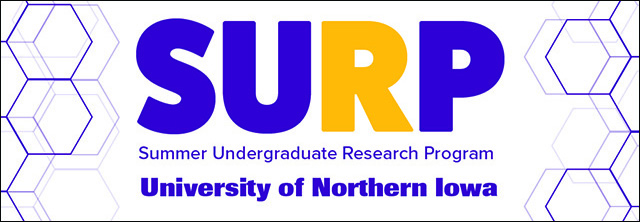
2021 Summer Undergraduate Research Program (SURP) Symposium
Location
Ballroom, Maucker Student Union, University of Northern Iowa
Presentation Type
Open Access Poster Presentation
Document Type
poster
Keywords
DNA--Sampling; Microbial genomes--South Dakota--Wind Cave National Park; Microbial diversity--South Dakota--Wind Cave National Park;
Abstract
The widespread sampling of environmental DNA from soils has led to a fundamental shift in our understanding of Earth’s microbiome by identifying previously unknown microbes that have never been grown in the laboratory. Many of the published protocols for the extraction of environmental DNA differ based on the starting material. These differences include changes to buffer composition, detergents, and enzymatic digest. To remove this bias, we sought a standardized protocol for samples from Wind Cave National Park, which includes both above ground prairie soil and paleofill from the deepest depths of the cave system. Pre-rinsing samples with either of two solutions, 100 mM sodium phosphate pH 7.2 (Na3PO4) and 100 mM Tris pH 8.0, 5 mM EDTA, 200 mM sodium chloride (TEN), was compared and the resulting DNA was visualized using agarose gel electrophoresis. Incorporating rinses resulted in darker bands of the expected size (greater than 10 kilobases) and less DNA degradation, meaning the rinses helped increase yield while isolating more intact DNA. In the future, including a pre-lysis rinse will improve the limit of detection in cave samples that contain low microbial abundance, allowing us to better understand microbial species composition in isolated environments.
Start Date
30-7-2021 11:30 AM
End Date
30-7-2021 1:15 PM
Event Host
Summer Undergraduate Research Program, University of Northern Iowa
Faculty Advisor
Marek K. Sliwinski
Department
Department of Biology
Copyright
©2021 Joseph Correa, Marek K. Sliwinski, and Emma Pellegrino
Creative Commons License

This work is licensed under a Creative Commons Attribution-NonCommercial 4.0 International License
File Format
application/pdf
Recommended Citation
Correa, Joseph; Pellegrino, Emma; and Sliwinski, Marek K. Ph.D., "Evaluation of Pre-Lysis Rinses To Improve DNA Yield and Purity" (2021). Summer Undergraduate Research Program (SURP) Symposium. 8.
https://scholarworks.uni.edu/surp/2021/all/8
Additional Files
Video Correa Fall 2021.mp4 (34475 kB)Video
Video Correa Fall 2021.srt (23 kB)
Closed Captioning SRT File
Evaluation of Pre-Lysis Rinses To Improve DNA Yield and Purity
Ballroom, Maucker Student Union, University of Northern Iowa
The widespread sampling of environmental DNA from soils has led to a fundamental shift in our understanding of Earth’s microbiome by identifying previously unknown microbes that have never been grown in the laboratory. Many of the published protocols for the extraction of environmental DNA differ based on the starting material. These differences include changes to buffer composition, detergents, and enzymatic digest. To remove this bias, we sought a standardized protocol for samples from Wind Cave National Park, which includes both above ground prairie soil and paleofill from the deepest depths of the cave system. Pre-rinsing samples with either of two solutions, 100 mM sodium phosphate pH 7.2 (Na3PO4) and 100 mM Tris pH 8.0, 5 mM EDTA, 200 mM sodium chloride (TEN), was compared and the resulting DNA was visualized using agarose gel electrophoresis. Incorporating rinses resulted in darker bands of the expected size (greater than 10 kilobases) and less DNA degradation, meaning the rinses helped increase yield while isolating more intact DNA. In the future, including a pre-lysis rinse will improve the limit of detection in cave samples that contain low microbial abundance, allowing us to better understand microbial species composition in isolated environments.



